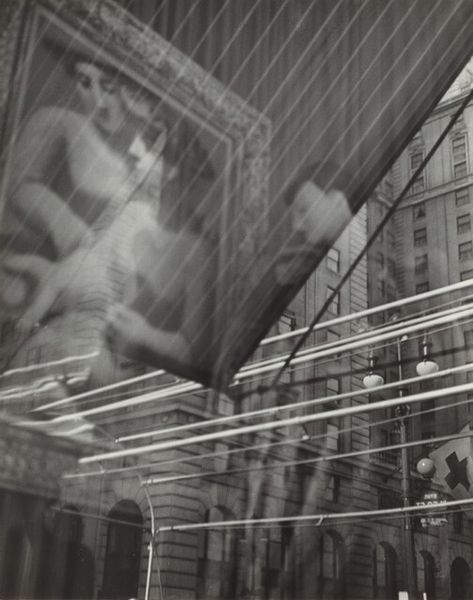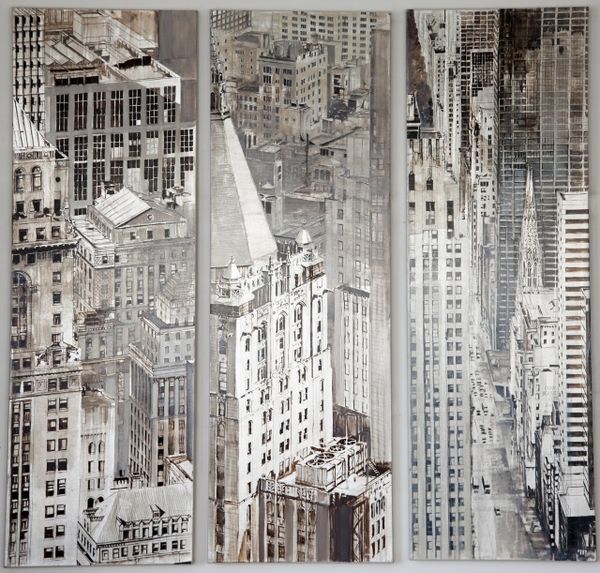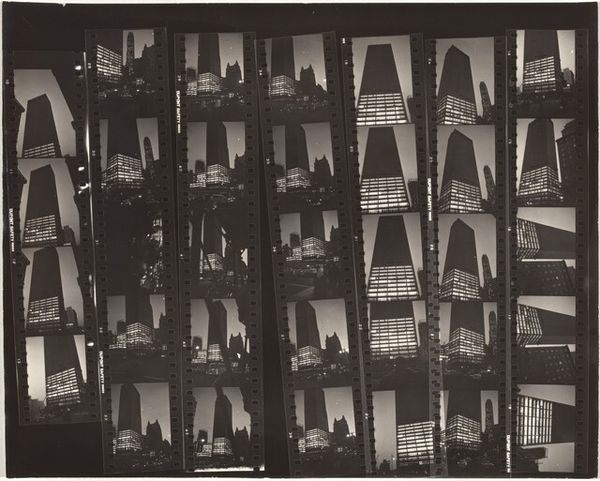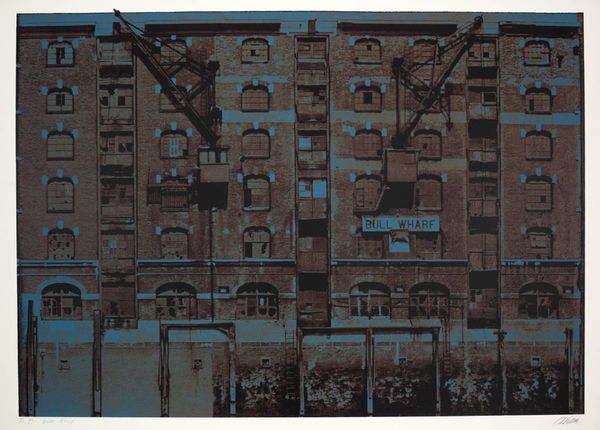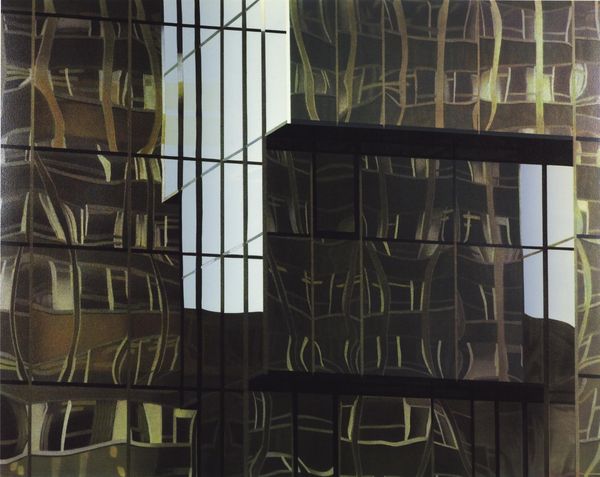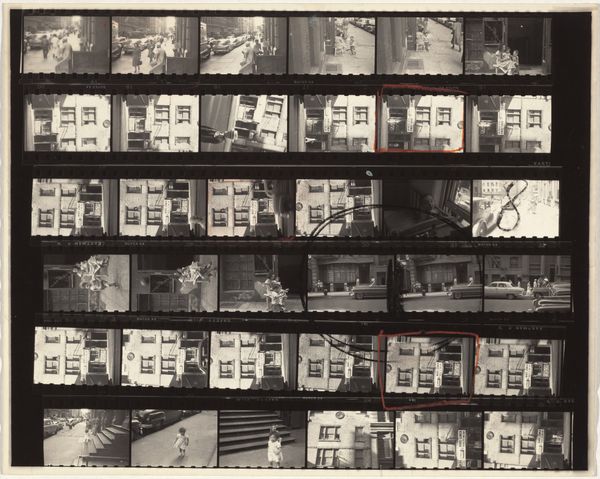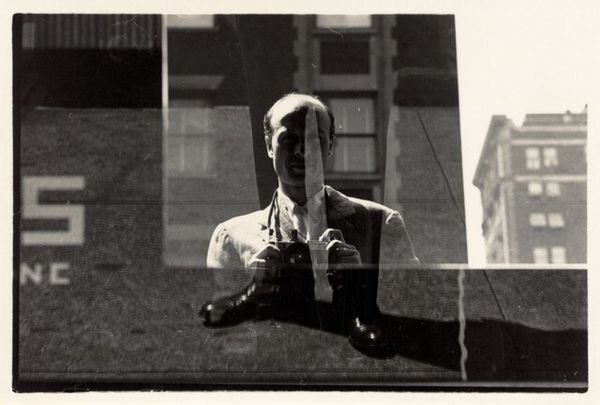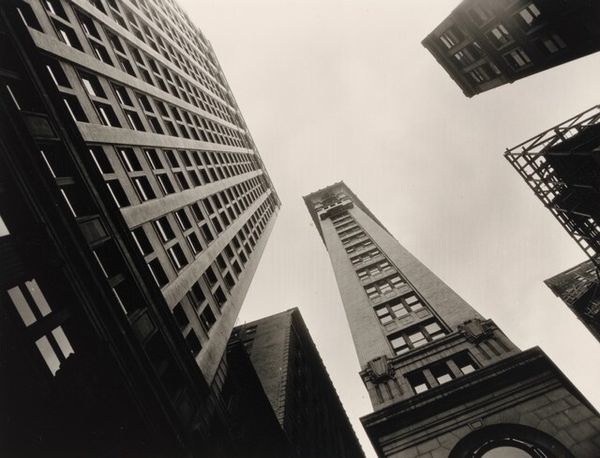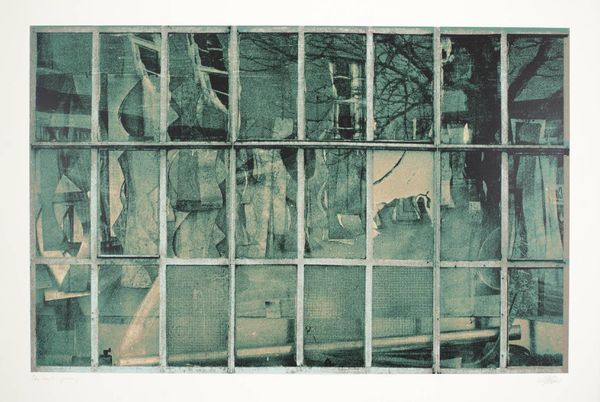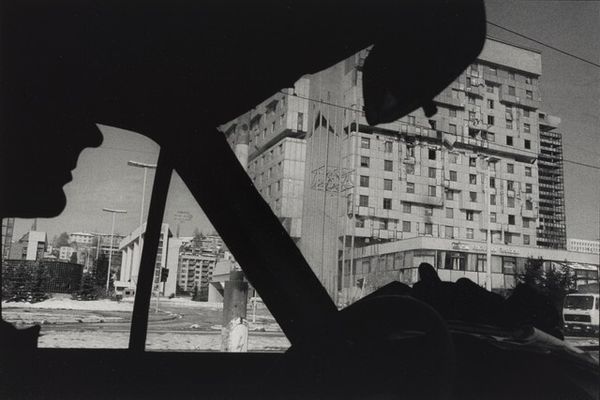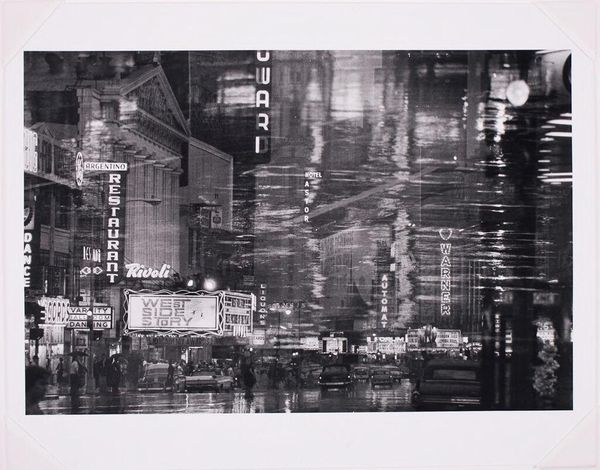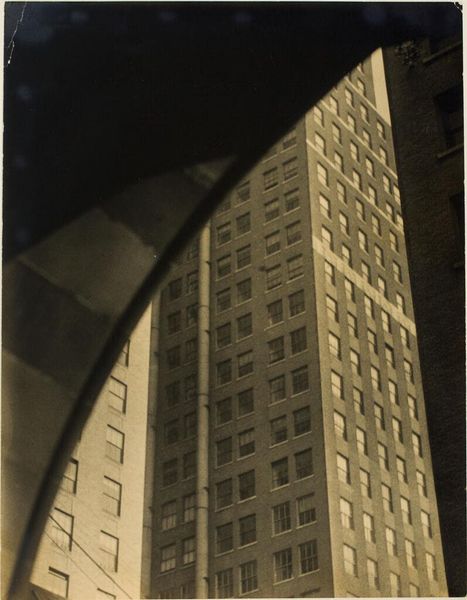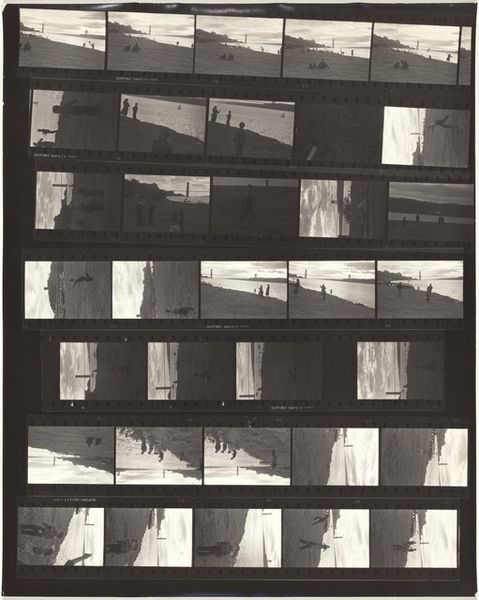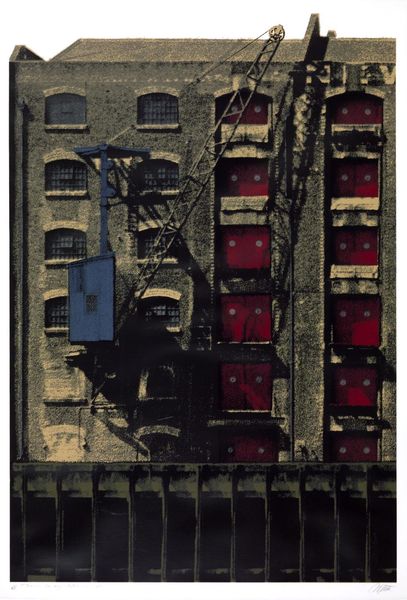
Dimensions: 18.6 x 18.2 cm (7 5/16 x 7 3/16 in.) sheet: 30.5 x 25.4 cm (12 x 10 in.)
Copyright: CC0 1.0
Curator: Looking at Harry Callahan's "Providence," held here at the Harvard Art Museums, I'm immediately struck by the layering, the way the city feels both present and ghostly. Editor: There's a tension, isn't there? These repeating architectural forms, like windows, become almost oppressive, yet softened by the ethereal quality of the image. What draws you to it, symbolically? Curator: The superimposition of the cityscape over cars suggests a dialogue between permanence and transience. Callahan often explored themes of place and identity, and here, the multiple exposures seem to question how we perceive reality itself. Editor: And what about the cultural backdrop? Callahan was working in a post-war America, grappling with urban development and societal shifts. Does "Providence" reflect that era's anxieties or aspirations? Curator: Perhaps both. The grid-like structure could represent the planned order of modern life, while the overlapping images hint at its inherent instability. For me, it evokes a sense of longing, a desire to find meaning within the chaos. Editor: It’s fascinating to consider how this manipulation of photographic reality mirrors our own fragmented experience of the world. Thanks for shedding light on this captivating piece.
Comments
No comments
Be the first to comment and join the conversation on the ultimate creative platform.
